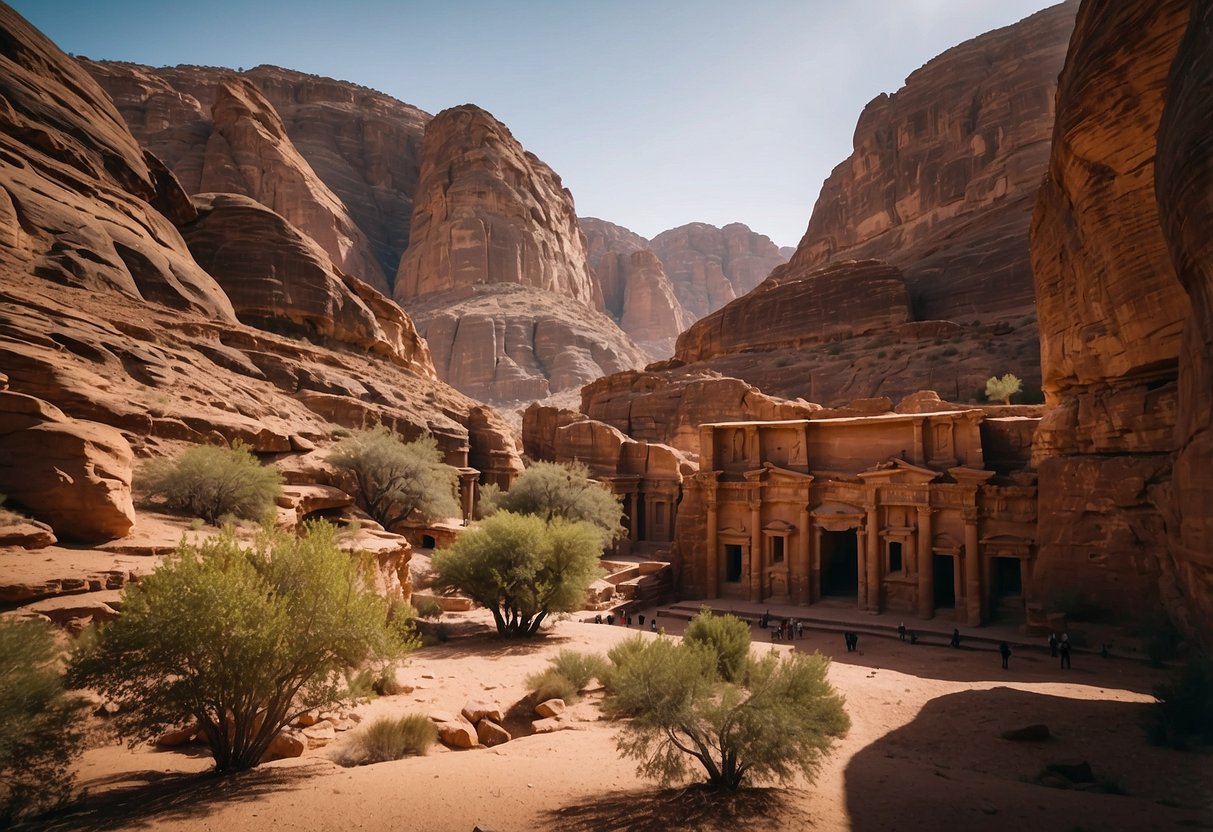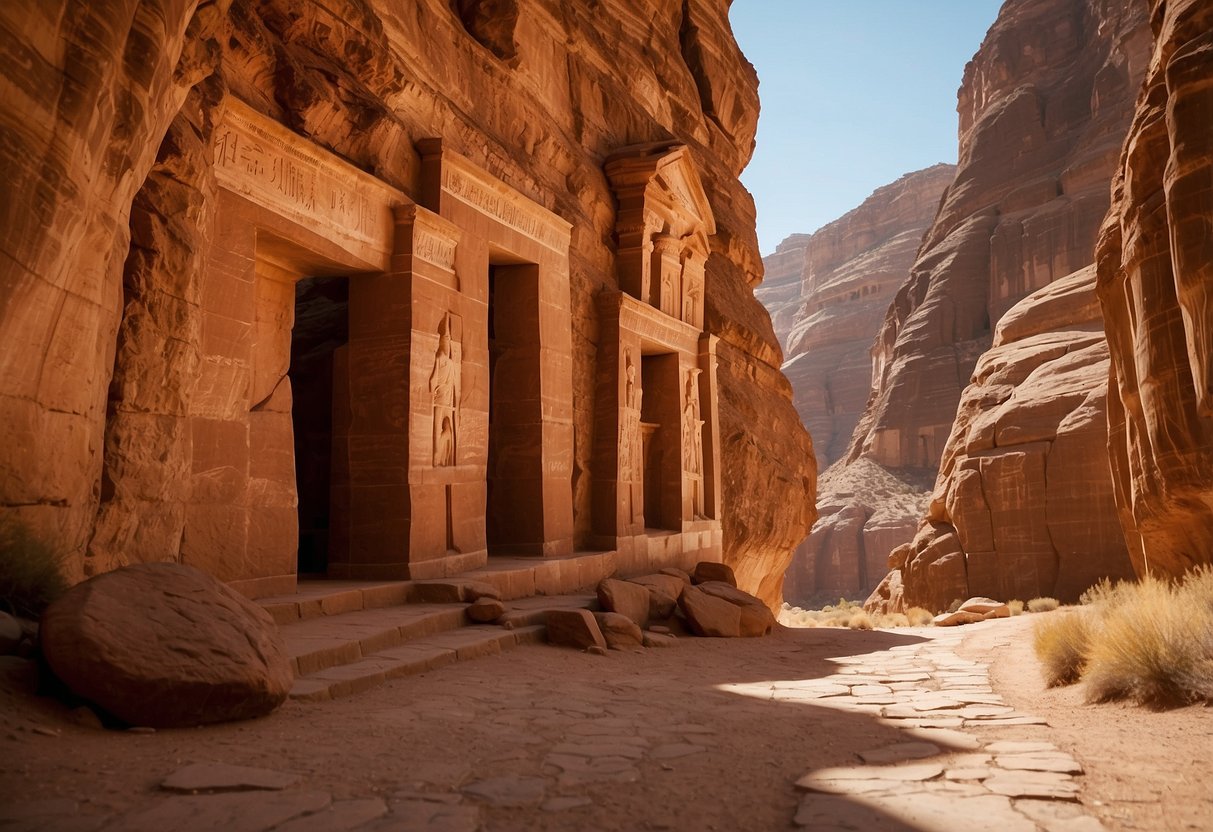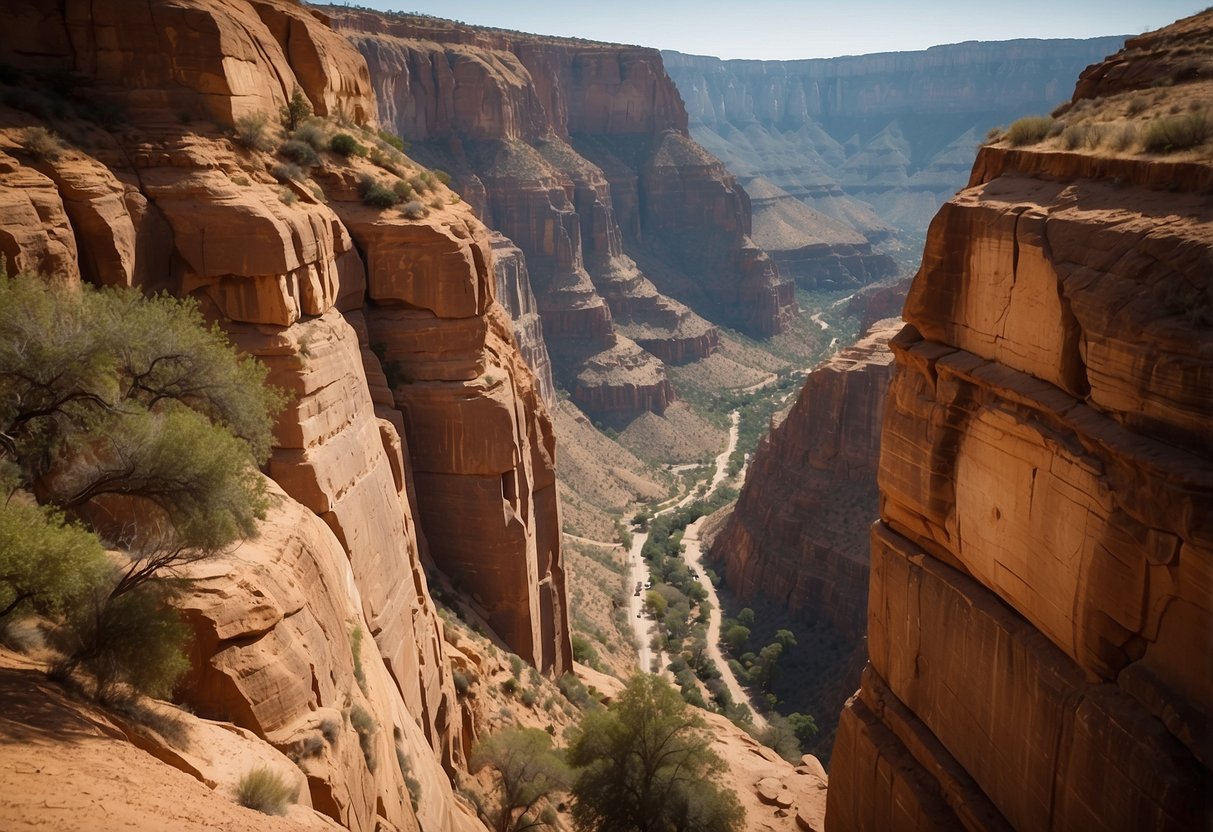
Exploring Ancient Architecture

Visitors to Petra in Jordan can expect to encounter a range of remarkable architectural marvels. These include intricate tombs and temples that display the engineering prowess and artistic skills of the ancient Nabataeans.
Royal Tombs
The Royal Tombs in Petra are a series of grand structures carved into the rock face. These tombs were likely built for high-ranking officials and nobility. The Urn Tomb, dated to the 1st century AD, is one of the most notable among them. Its impressive façade features several layers of rock-cut terraces and a grand double staircase leading up to it.
The Silk Tomb is renowned for its vibrant red and yellow striped stone. The intricate detailing on the interior wall carvings provides a glimpse into the artisanship of the period. Each tomb not only served as a resting place but also as a testament to the social hierarchy and architectural ingenuity of the Nabataeans.
The Great Temple
The Great Temple is a sprawling complex that showcases the architectural and urban planning abilities of the Nabataean civilization. Situated in the heart of Petra, the temple covers an area of approximately 7,560 square meters. Excavations reveal that it included a colonnaded street, an upper and lower temenos (sacred enclosure), and a grand staircase leading to elevated platforms.
The interior of the temple is filled with remnants of Corinthian columns, elaborate stone carvings, and spacious assembly halls. The temple’s design suggests it was used for both religious ceremonies and public gatherings. The archaeological findings, including pottery and statues, indicate the temple’s significance in daily Nabataean life.
Qasr Al-Bint and Colonnaded Street
Located at the end of the Colonnaded Street, Qasr Al-Bint is one of the best-preserved freestanding structures in Petra. Built around the 1st century BC, this temple is thought to have been dedicated to the Nabataean god Dushara. The temple features thick walls, high doors, and a well-preserved staircase leading to the altar room.
The adjoining Colonnaded Street was Petra’s main thoroughfare, flanked by rows of columns. This street connected major public buildings, markets, and temples. Walking along this path now provides a sense of the bustling activity that would have taken place. The street’s design showcases the blending of Nabataean and Roman architectural influences, reflecting Petra’s role as a commercial hub.
Adventures in Hiking

In Petra, hiking offers a unique blend of scenic views and historical landmarks. Two key trails—the challenging route to the Monastery and the High Place of Sacrifice Trail—provide unforgettable experiences for visitors.
Challenging Hike to the Monastery
The hike to the Monastery, also known as Ad Deir, is both demanding and rewarding. This trail involves ascending around 800 steps, carved into the rock by the Nabataeans. Visitors should be prepared for a steep climb that requires a good level of physical fitness.
As hikers make their way up, they will pass through rugged landscapes and may encounter local Bedouin selling refreshments and handmade crafts. Upon reaching the top, the Monastery reveals itself in magnificent form, an impressive facade carved directly into the cliff. The view from the plateau offers panoramic vistas of the surrounding valleys and distant mountains.
Take your time to explore the area around the Monastery. There are often fewer crowds here compared to the Treasury, making it a peaceful spot to rest and take in the surroundings. Be sure to wear sturdy footwear and bring plenty of water, especially in the warmer months.
High Place of Sacrifice Trail
The High Place of Sacrifice Trail is another noteworthy hike in Petra. This trail, which starts near the main entrance, involves a steep ascent to the summit, where the ancient Nabataean High Place of Sacrifice is located. The trail is less frequented by visitors, offering a quieter path.
Climbers will witness rock formations and smaller tombs along the way. Reaching the top, the High Place itself is a flat stone surface historically used for rituals. Beyond the historical site, hikers are rewarded with stunning views over the ancient city and the surrounding landscapes.
Ensure you have adequate supplies, including sunscreen and water. While challenging, this trail provides a comprehensive look at Petra’s natural beauty and ancient engineering, making it a must for avid hikers.